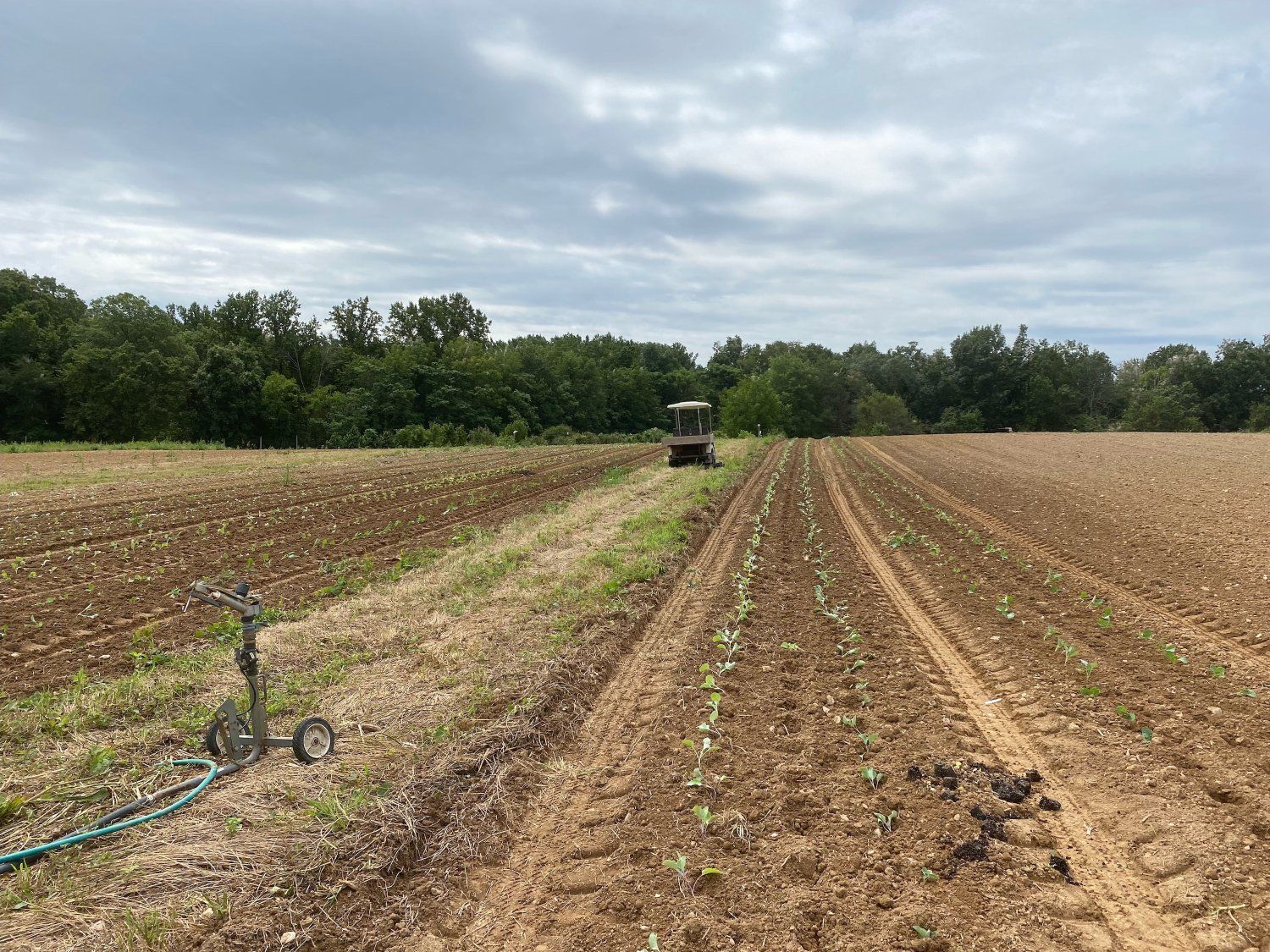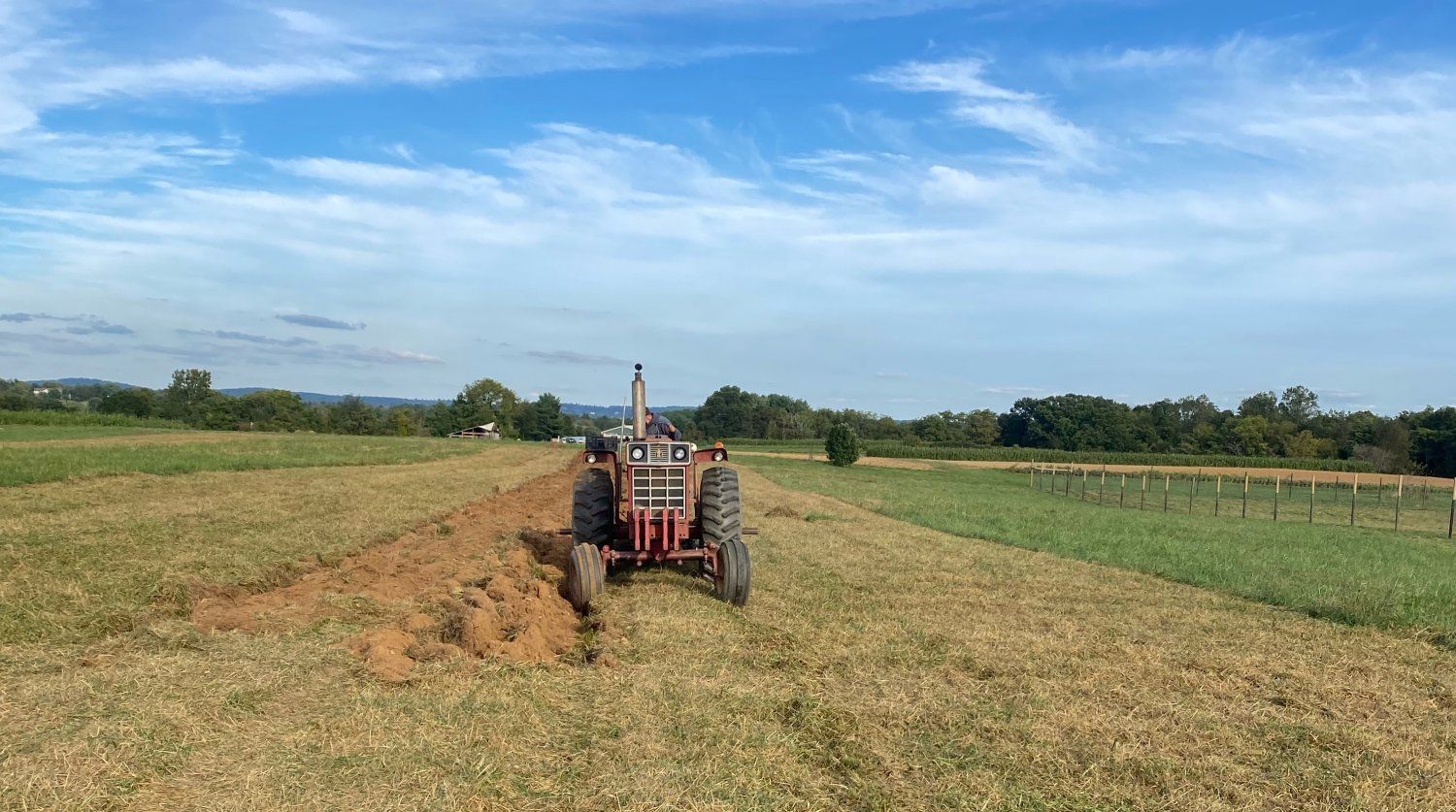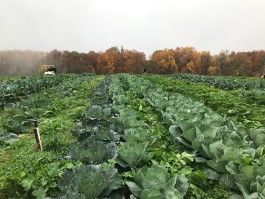This week in Farm Notes, hc interviews Casey Gustowarow about cover crops, and it's actually really interesting. I promise!
 It's October now, so it's time to think about winter. We just got past the autumnal equinox, but farmers need to think two or three months into the future (or more). We are enjoying the fruits of our August labors, picking bok choy, and kale, and arugula, and at the same time we are planning for the time when the ground is frozen.
It's October now, so it's time to think about winter. We just got past the autumnal equinox, but farmers need to think two or three months into the future (or more). We are enjoying the fruits of our August labors, picking bok choy, and kale, and arugula, and at the same time we are planning for the time when the ground is frozen.
 Every time we say goodbye to a crop, we mow it down, turn the soil, make it nice and fluffy again, and then we plant the seeds that will protect and enhance that soil all winter long. We plant barley and clover and winter peas and wheat and radishes. As October marches on, the ratio of food crops to cover crops keeps changing. No more tomato plants, no more summer squash, no more winter squash. All of that switches over to fields of green. It is a thing of beauty, this growing patchwork of winter-hardy grains. The roots of these crops will keep the soil loose and the above-ground plants will eventually be turned back in to feed the soil, when warm weather returns.
Every time we say goodbye to a crop, we mow it down, turn the soil, make it nice and fluffy again, and then we plant the seeds that will protect and enhance that soil all winter long. We plant barley and clover and winter peas and wheat and radishes. As October marches on, the ratio of food crops to cover crops keeps changing. No more tomato plants, no more summer squash, no more winter squash. All of that switches over to fields of green. It is a thing of beauty, this growing patchwork of winter-hardy grains. The roots of these crops will keep the soil loose and the above-ground plants will eventually be turned back in to feed the soil, when warm weather returns.
Soon we will plant the winter vegetables in the plastic-covered tunnels. On our hands and knees we will plant chard and kale and collards and lettuce for February and March. These plants will be protected from snow but not really from cold. They will grow during the sunny days and sit quietly on the cloudy days. With the short days of late fall and early winter, they will grow very slowly.
 Soon we will start to dig carrots and we will finish digging the sweet potatoes. Those carrots were planted in the middle of summer and the sweet potatoes went in before that, at the beginning of June. All around the year, we are planning and planting for a time that is months in the future. Our hands and feet are in the October soil, and our minds are dreaming about February. That's one definition of optimism.
Soon we will start to dig carrots and we will finish digging the sweet potatoes. Those carrots were planted in the middle of summer and the sweet potatoes went in before that, at the beginning of June. All around the year, we are planning and planting for a time that is months in the future. Our hands and feet are in the October soil, and our minds are dreaming about February. That's one definition of optimism.
For more recipe ideas you can find us on Pinterest!




